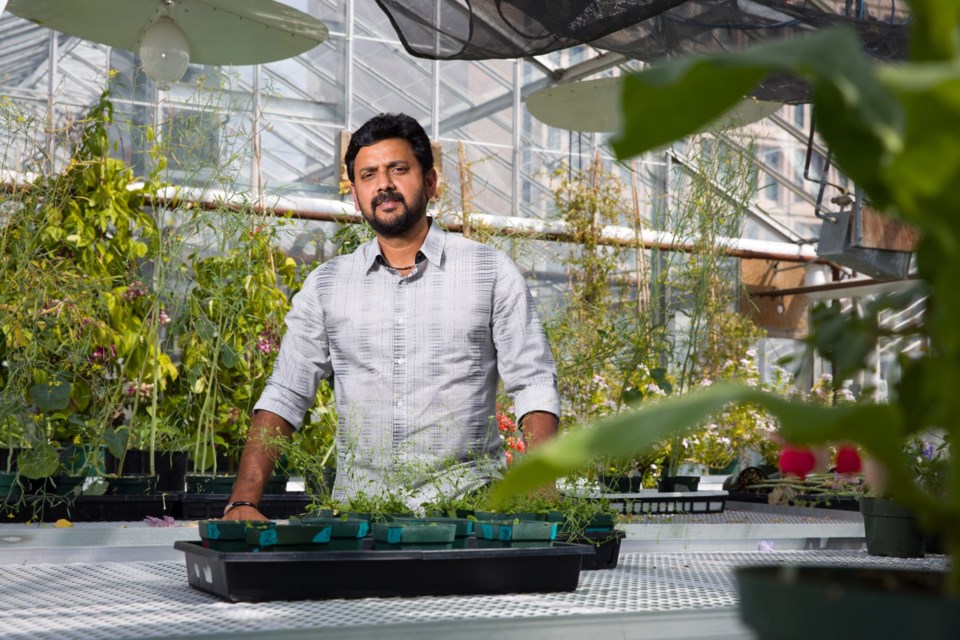A four-year research project is now underway in Alberta that will use genomic technologies to produce hardier pea varieties, and ultimately, a more climate-resilient food system.
Led by Marcus Samuel from the University of Calgary and Sateesh Kagale from the National Research Council of Canada, the PeaCE (Pea Climate-Efficient) project was awarded over $6 million in funding from Genome Canada as part of its Climate-Smart Agriculture and Food Systems initiative.
Using sequencing and other tools, the researchers aim to reveal genetic traits that make some peas drought and root rot resistant. By breeding these traits into pea varieties, the project could remove two of the biggest hurdles currently preventing wider adoption of the high-protein, low-carbon pulse crop.
“Nitrous oxide from nitrogen fertilizers is a major greenhouse gas that is 300 times more potent than carbon dioxide at trapping heat. Peas belong to the legume family and require little external nitrogen, making them exceptionally climate efficient. They really are the perfect crop for this research.” Samuel said in a news release.
Peas and other pulses fix nitrogen from the air, sequestering considerable amounts of the gas in the soil, and reducing the need to use nitrogen fertilizer. The researchers estimate swapping peas for wheat or canola in crop rotations would reduce greenhouse gas emissions by 22-37 per cent.
While scientists and consumers are increasingly taken by the potential for peas in future food systems, farmers on the prairies are battling Aphanomyces and other root-rot-causing pathogens that have devastated pulse fields for the last 10 years.
“It's causing us to plateau our acres, and probably in some cases even decline, just because the root rots are such a significant problem for farmers,” said Shane Strydhorst, chair of Alberta Pulse Growers.
The amount of peas planted in Canada has shrunk from 3.8 million acres in 2021 to 3 million acres in 2023, a rate of decline of about 10 per cent a year, according to Statistics Canada.
“We don't really have a good solution to the root rot complex,” Strydhorst said.
“At this point we would have to maybe take (peas) out of rotation altogether, in some cases where the disease issues are really bad. Or if nothing else, stretching from one-in-four years to maybe one-in-eight years, just to avoid having a wreck.”
The pathogens that cause root rot complex can stay in the soil for years following an infection, greatly extending the time farmers must wait before replanting vulnerable pulses in crop rotations.
Alberta Pulse Growers contributed $500,000 to the PeaCE project, and was attracted to the research because it is seeking to address “one of the major problems facing the pulse industry right now,” Strydhorst said.
“We've invested over $3.7 million in the last 10 years since becoming aware of Aphanomyces,” he said.
Growers have experimented with seed treatments to try and manage diseases and learned about assessing risk of problems in the field. “But really, our only solution at this point is to stretch out our crop rotations, which is not ideal,” he said.




